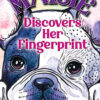Good morning from Gail Gaymer Martin at www.gailmartin.com
When creating story, the author should remember that each genre has its own set of patterns or “rules.” By rules, I mean reader expectations and qualities editors look for in your manuscript.
These patterns or rules do not exclude creativity. If that were so, authors would lose their spirit. Within the expected genre patterns, authors have great leeway to create unique stories. So let's take a look at the various patterns for romance, mystery and suspense, and speculative fiction such as: fantasy, paranomral and adventure,
Let me start with the simplest pattern—romance.
• Boy meets girl
• Relationship moves from awareness to interest to attraction, and finally falling in love.
• Something gets in the way of the romance—conflicts both internal and external
• Boy loses girl (or girl loses boy)
• Ultimate dark moment when all seems lost
• Problems resolve and boy gets girl.
Obviously the story line is more complex than this, but looking at a skeletal outline, this is it. The hero and heroine usually meet early in the first chapter as close to page 1 as possible. The three stages leading to falling in love occur in the order above, but the duration of each stage varies depending on the plot. Conflicts grow and deepen until the worst conflict occurs and seems impossible to resolve. But it is resolved and love conquers all.
Mystery, suspense and thrills have their own similar pattern.
• Crime happens—killing, body, kidnaping, threat, bombing
• Good guy(s) move in to find the suspect(s) and stop further crimes
• Good guys gather clues and follow the trail
• Bad guys evade and set traps
• Red herrings occur —things that mislead the detectives and the readers
• Good guys close in/miss target
• Desperation—the ticking bomb ins about to explode
• Last effort/bad guy is cornered.
• They save the day.
While each of these genres are similar, there are differences. Thriller are more global usually and faster paced than mystery or suspense. Mystery is defined as a puzzle. A crime has occurred and the good guy must find the truth and bring order back to the community. Mysteries are often called “whodunit”s because the culprit is unknown. Suspense differs because it often works with a threat or danger on someone’s doorstep. It is an emotional roller coaster, waiting to find who’s hiding the basement or if the person’s best friend is the crazed killer. Suspense tends to have more intensity with more at stake for the main characters who are often in mortal peril.
Fantasy, adventure, and speculative fiction have their own sets of expectations.
• Good vs. evil • Something happens to introduce a challenge
• Hero is called to follow the challenge • Journey begins
• The evil powers pit against the good powers
• Hero faces the demon
• Good wins over evil.
Most all speculative fiction falls under this pattern as well as adventure.
Again, authors have a million options on how to weave the journey following these patterns, but if they leave one element out or veer too far from what is expected, the reader will be disappointed, and the editor may pass on the book. Keep these elements in mind as you develop your stories in these genres.
Next time, we'll look at Story Structure. See you then.

